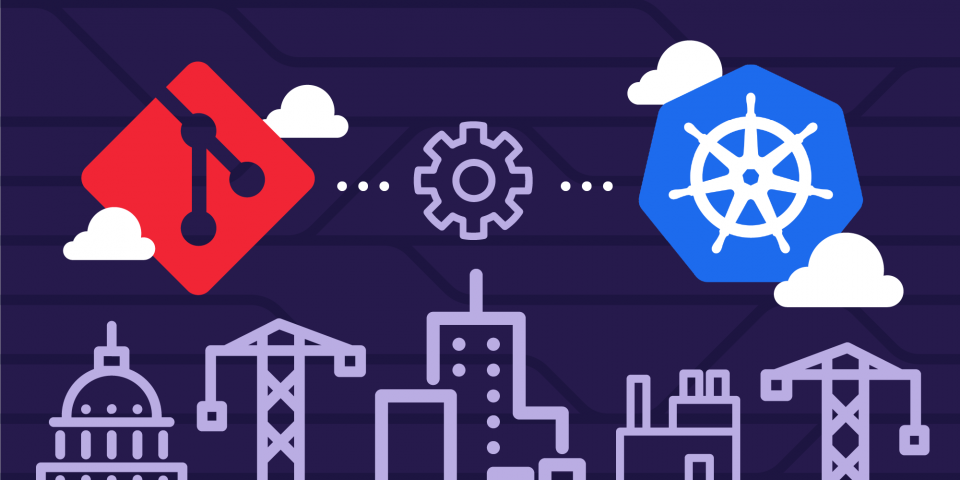
GitOps: Streamlining Application Deployment with Git and Kubernetes
Abdul Moiz Siddiqui
Fueling Growth in the Cloud & AI Frontier | Sales & Business Development Catalyst | Playing around with Automated Workflows and AI Agents
In the fast-paced world of software development, efficient and reliable application deployment is crucial for businesses to stay ahead. The traditional approach to application deployment often involves multiple manual steps, resulting in a complex and error-prone process. However, with the advent of GitOps, a new paradigm has emerged that leverages Git and Kubernetes to streamline the deployment process, empowering teams to deliver applications more effectively.
What is GitOps?
GitOps is a modern approach to software delivery that combines the power of Git, a popular version control system, and Kubernetes, a leading container orchestration platform. It introduces a declarative and auditable way of managing infrastructure and applications, automating the deployment process and ensuring consistent, predictable outcomes.
The GitOps workflow revolves around a Git repository, acting as a single source of truth for both the application code and the desired state of the infrastructure. Any changes to the code or infrastructure are made through pull requests, enabling collaboration and version control. These changes trigger a series of automated processes that reconcile the desired state with the actual state in the Kubernetes cluster, ensuring that the deployed applications match the intended configuration.
Streamlining Application Deployment
GitOps simplifies and streamlines the application deployment process by providing several key benefits:
1. Infrastructure as Code:
With GitOps, infrastructure is defined and managed as code. This approach allows teams to treat infrastructure configurations as version-controlled artifacts, enabling easy collaboration, review, and rollback. By keeping infrastructure configurations in Git, teams can easily reproduce environments, leading to consistent deployments across various stages of the application lifecycle.
领英推荐
2. Continuous Deployment:
GitOps embraces the principles of continuous integration and continuous deployment (CI/CD). Changes pushed to the Git repository trigger automated workflows that build, test, and deploy the application in a standardized and repeatable manner. This eliminates manual intervention and reduces the risk of human error, ensuring faster and more reliable deployments.
3. Increased Visibility and Auditing:
By centralizing the deployment process in a Git repository, GitOps provides enhanced visibility and auditability. Every change made to the infrastructure or application is tracked, allowing teams to review and understand the evolution of their deployments. This audit trail aids troubleshooting, compliance, and regulatory requirements, providing a robust foundation for governance.
4. Rollback and Recovery:
In case of deployment failures or issues, GitOps simplifies the rollback and recovery process. As all deployment configurations are version-controlled, reverting to a previous working state becomes as simple as rolling back a Git commit. This enables teams to quickly recover from incidents, reducing downtime and improving overall system resilience.
5. Collaboration and Scalability:
GitOps promotes collaboration among team members, as all changes are made through pull requests that can be reviewed and approved by peers. This approach enhances knowledge sharing, ensures code quality, and prevents unauthorized changes. Additionally, GitOps scales effortlessly as the team grows, facilitating seamless collaboration between developers, operations, and other stakeholders involved in the deployment process.
Conclusion:
In an era of rapid software delivery, GitOps offers a transformative approach to application deployment. By leveraging Git as the single source of truth and combining it with the power of Kubernetes, teams can streamline their deployment processes, reduce errors, and achieve faster time-to-market. GitOps fosters collaboration, enforces infrastructure as code, and provides the visibility and auditing capabilities necessary for efficient and reliable deployments.
As organizations strive to modernize their software delivery practices, embracing GitOps can unlock significant benefits. By empowering teams to manage infrastructure and applications declaratively, GitOps enables businesses to achieve higher efficiency, improved scalability, and increased reliability in their application deployment pipelines. Embrace GitOps, and unlock the true potential of your software development lifecycle.